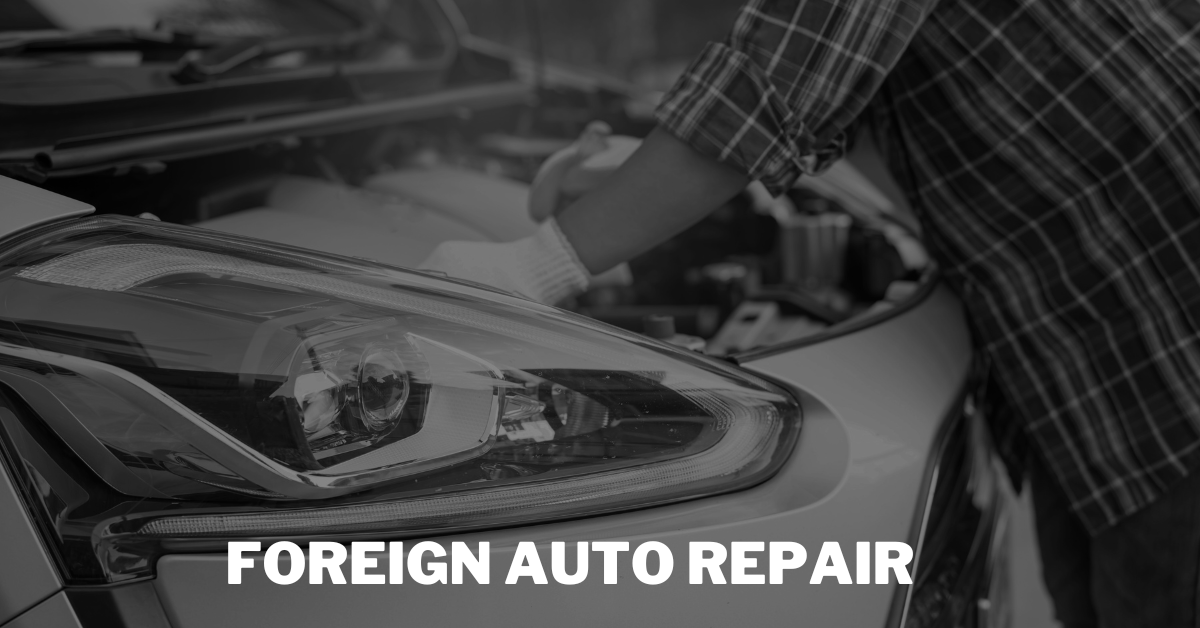Introduction:
Auto Electrical Repair
Auto electrical repair is one of the most essential activities regarding vehicle maintenance to ensure a car’s electrical components are functioning properly. From the battery to the alternator, wiring, and sensors, an automobile’s electrical system assists every part in moving smoothly. A light understanding of how this system operates, what problems are commonly found, and what techniques are used for repairing can help an owner to avoid unexpected failures and the costs of repairs.
Importance of Auto Electrical Repair Systems
This entire complex framework of electrical components enables efficient operation in every modern vehicle. The electrical system powers significant functions such as ignition, lighting, air conditioning, and entertainment. It also fuels important safety features, such as airbags and the antilock braking system (ABS). Regular maintenance and timely repairs of electrical components enhance the unparalleled performance of an automobile.
Aside from powering these functions, the auto electrical repair system is the other entity that aids in fuel efficiency and emissions control. Hybrid vehicles and electric vehicles (EVs) are much more reliant on sound electrical systems for proper operation. Deviations within this network create potential extreme performance issues, which is why one should regularly conduct maintenance and inspections.
Components of the Electrical System of an Automobile
1-Battery: It serves as the primary power source for the auto electrical repair system of the vehicle; it provides the energy needed to crank the motor and keep electronic components energized when the engine is off. A weak or defective battery will be sufficient to slow down engine cranking, dim lights, and cripple electronics.
2-Alternator: As long as the engine runs, an alternator charges the battery and powers the auto electrical repair system. Upon alternator failure, the battery will start draining, causing the eventual stall of the vehicle. Dim headlights, warning lights on the dashboard, and recurrent battery replacements characterize common symptoms of alternator failure.
3-Starter Motor: This makes cranking of the engine whenever you turn on the ignition key. A malfunctioning starter motor can inhibit engine start-up. Notable symptoms may include the starter clicking when you turn the key, grinding sounds, or not starting completely.
4-Fuses and Relays: Fuses and relays are used for protection against electrical overloads and short circuits. A blown fuse will stop specific electrical components from working. Checking and changing blown fuses is a common auto-electrical repair.
5-Wiring and Connectors: The wiring carries electrical signals and power all over the vehicle. Damaged or corroded wires may cause electrical faults. Issues such as flickering lights, irregular behavior of electrical components, or complete system failure may frequently trace back to faulty wiring.
6-Sensors and Control Modules: Today, modern vehicle operations of fuel injection, emission control, and engine performance all depend upon sensors and control modules. The faulty sensor can illuminate the check engine light, affect fuel efficiency, and impair vehicle performance as a whole.
Electric Problems in Cars
1-Dead Battery: Many drivers have this problem to the extent that it becomes mundane. It usually happens as a result of long inactivity, extreme temperatures, and a defective alternator. Regular battery inspection and replacements can save a person from sudden failures.
2-Bad Alternator: If the lights are dim, certain electrical gadgets do not work, and the battery is not charged, then it is a failing alternator. A runaway alternator may cause the car to have no battery and will need immediate attention.
3-Starter Motor Problems: A faulty starter motor shows signs such as clicking, when turning the key, slow cranking, or total failure to start. Connections should be ensured and the starter inspected for wear and tear.
4-Blown Fuses: You may end up blowing some fuses and as a result, electrical components of the vehicle such as headlights, power windows, or even the radio may stop working. The affected fuse can be replaced or repaired, although it’s worth noting that recurrent blown fuses may indicate a more serious problem.
5-Wiring Problems: Corroded or frayed wires are likely to interrupt and prevent the electrical flow, resulting in systems behaving erratically. Some wiring problems can lead to fire in the worst case and require immediate repair.
6-Bad Sensors: Bad sensors can set warning lights in the dashboard and cause various performance problems. Bad sensors include the oxygen sensor, mass airflow sensor, and throttle position sensor.
7-Problems with the Ignition System: The defective ignition coils and spark plugs, as well as the ignition switch itself, cause most of the problems related to starting the engine to misfire or just not performing at its best.
Diagnosis of Auto Electrical Repair Failures
1-Visual Inspection: Checking for damaged wires, loose connections, and corroded terminals can help point out auto electrical repair problems. A thorough visual inspection would often reveal burnt wires, melted fuses, or loose connections on battery terminals.
2-Using a Multimeter: A multimeter could be used for the measurement of voltage, resistance, and current flow, providing a means of detecting abnormalities in the electrical system. Testing various circuits and connections will locate the initial cause of the problem.
3-Testing the Battery: By testing the voltage of the battery, one can determine if the battery is holding a charge well. The battery should read approximately 12.6 volts when fully charged, off the car, and approximately 13.7 to 14.7 volts while the engine is actually running.
4-Checking the Alternator: Testing the output of the alternator will diagnose charging issues. If the alternator is bad, then it may overcharge or undercharge the battery, creating issues with performance.
5-Reading Diagnostic Trouble Codes (DTCs): Most modern vehicles store error codes in their onboard computer which can then be extracted with the assistance of a diagnostic scanner. These codes indicate the probable electrical fault and initiate the repair procedure.
6-Testing Electrical Components: Testing relays, fuses, and control modules make sure respective components carry out their functions.
Some Techniques Used in Auto Electrical Repairs
1-Battery Replacement: The most obvious solution to a non-rechargeable battery is battery replacement. Have the battery renewed if your maintenance does not extend battery life. Cleaning terminals and checking the level of the electrolyte are examples of minor maintenance practices to keep it healthy.
2-Alternator Repairs or Replacement: If a battery is getting under- or over-charging, it requires repair or replacement services from here. Not giving priority to this problem can leave the electric circuits in dark, causing dimming lights and faults in electrical systems.
3-Starter Motor Repair: The problems with starting can also completely be cured by cleaning connections or replacing a starter motor that is damaged. Proper lubrication and inspection for worn-out gears will also be beneficial.
4-Fuse and Relay Replacement: Replacing blown fuses or faulty relays can restore power levels to many components very effectively. Also, use the proper amperage ratings for fuses to prevent recurring failures.
5-Wiring Repair: Damaged wire replacement; use of electrical tape; or heat sinking of connections can actually avert electrical failures: Proper insulation and routing of wires can also avoid future problems.
6-Sensor Replacement: Replacement of malfunctioning sensors enables maximum performance of both engine and vehicle. A faulty sensor reduces the fuel economy and increases the emissions.
Preventive Maintenance on Auto Electric Repair Parts
1-Regular Battery Checks: Battery terminals should be checked and cleaned of corrosion, extending battery life. A clean and firm battery terminal connection prevents dropping voltage at the terminals, which can affect performance.
2-Alternator Inspections: Regular checks for alternator output help maintain charging. A good alternator belt ensures efficient operation.
3-Starter System Maintenance: Checking the electrical connections will help in avoiding problems with the starter motor. Keeping the starter motors clean and free from debris will prolong their life span.
4-Wiring Inspections: Watching for frayed or exposed wire prevents possible electrical failures. Keeping wires away from heat sources and moving parts will stop further wear and tear.
5-Use of Quality Electrical Components: Using high-quality fuses, relays, and sensors will improve system reliability. Poor quality parts can fail prematurely and trigger unexpected faults.
6-Professional Diagnostic Testing: Regular checks by a professional technician can help identify potential auto electrical repair issues early before they escalate into serious problems. Regular maintenance and timely repairs can prevent the loss of significant investments.
FAqs About Auto Electric Repairs
1-What are the most widespread auto electrical repair issues?
Auto electrical repair issues can be very small inconveniences to really concerning vehicle malfunctions. The most common problems are battery failure, alternator trouble, starter motor failure, blown fuses, wiring problems, sensor issues, ignition system problems, and issues with lights, power windows, and infotainment. All of these must be addressed; otherwise, they could be a threat to the performance and safety of your vehicle.
2-Why does my car battery die so often?
There are endless reasons relating to your car battery dying a lot: leaving the lights on or leaving accessories on, the alternator being weak and thus not able to charge the battery properly, parasitic drains occurring due to faulty wiring or components, extreme temperature conditions, and of course an old battery that is incapable of holding a charge anymore. Routine battery checks and making sure that any electrical component is turned off when not required will help the battery stay alive longer.
3-A bad alternator causes drain on the battery?
Indeed, a malfunctioning alternator will generally bring about severe discharges in a battery. In this case, the charging levels either may not be enough or may fall short of demands; the battery will have to fuel demand, and hence, it will drain faster. Another scenario in which such a situation can occur is when the diode in the alternator has a short, in which case it will sometimes have a battery drain even when the engine is turned off; this will dry out the battery much faster.
4-How to tell whether your starter motor has a problem?
Starting failure or interference of the ignition switch with a clicking noise can be strong clues that your vehicle has a starter motor problem, alongside the other problems like slow engine cranking, intermittent starting, grinding noises, or total failure to start. A qualified mechanic could test and assess the voltage supplied to the starter motor and measure voltage drop from the connections to determine whether or not it needs replacing.
Why do I notice that the headlights dim when I accelerate or when I use some other electrical devices?
The symptoms of dimming headlights most probably indicate either a bad alternator, corrosion at either of the end terminals of the battery, or a bad voltage regulator. In addition, the condition is found when the headlights dim when other electrical devices draw more power; at this time, the alternator cannot compensate with supply charging and hence makes it dimmer. Solution to this problem lies in checking the outputs of the alternator as well as battery connections.
5-What Blow Fuses in a Car?
A blown fuse occurs when excessive current is supplied to the circuit, producing heat and melting the fuse. Some common causes are short circuits, defective wiring, flooding, overloading electrical accessories, or a defective electrical component. Routine inspection and prevention of the fuse box and replacing damaged fuses can help prevent further problems.
6-Can I Replace a Blown Fuse by Myself?
Yes, replacing a blown fuse is a simple task. Just find the fuse box (usually under the dashboard or on the hood), find the blown fuse (check for a broken filament), and place another fuse with the same rating. If the new fuse blows at once, there would be some other auto electrical repair fault that needs professional examination.
Why Does My Infotainment System Keep Resetting or Malfunctioning?
Some reasons for infotainment system malfunctions include glitches, wiring faults, battery problems, or faulty control modules. Resetting the system, changing the software version, monitoring battery voltage, and checking wiring connections may aid in troubleshooting.
7-What can I do when the power windows stop working?
When the power windows fail, it could be due to several reasons, including a blown fuse, defective motors, malfunctioning switches, and damaged wiring. If only one window is affected, the switch or motor associated with it may be the problem. But if more than one window isn’t working, it could either be a blown fuse or a wiring problem.
8-Why are all the lights blinking on the dashboard?
If several warning lights suddenly come on together, it’s possible that there is a significant problem somewhere in the electrical system-declining alternator, battery problems, or a failed control module. For more specific information, one may run an OBD-II diagnostic scan and check the identified fault codes.
9-How can I test my alternator at home?
An alternator can be tested using a multimeter. A sound battery should register about 12.6 volts with the engine off. Start the engine and check the voltage again; it should be between 13.7 and 14.7 volts. If the reading is too low or too high, consider repairing or replacing the alternator.
10-What is a parasitic drain, and how do I identify one?
A parasitic drain is when an electrical item draws power from the battery while the vehicle is off. In order to detect it, one would need to have a multimeter that can read milliamperes and set it up to run in ammeter mode and wired in series to the negative terminal of the battery. If the draw is in excess of what would be commonly expected from a normal vehicle (50 milliamps), the vehicle probably has a parasitic drain that requires diagnosis.
11-What would cause a car to stall intermittently while in use?
Intermittent stalling can be caused by the failure of a sensor, which may include a mass airflow sensor or crankshaft position sensor, issues with fuel delivery, ignition system problems, or electrical failures. Performing a troubleshooting diagnosis and checking through the fuel and ignition components should assist in pinpointing the cause.
12-Is auto electrical repair costly?
Auto Electrical repair work shows variation in cost according to a given problem. While fixing simple things like replacing the blown fuse or repairing a loose wire may cost you little, the ones that can be hit with high prices due to major repairs are alternator installation, starter motor installation, or ECU fixed price. Doing the regular maintenance should save you from doing such repairs ever so often.
conclusion:
Auto electrical repair is an indispensable aspect of vehicle maintenance that guarantees safety, reliability, and optimal performance. Modern vehicles execute functions from starting, entertainment, and security through a series of complicated electrical systems. Proper maintenance of these systems requires constant checks, immediate repairs, and thorough acquaintance with common issues.
Auto electrical repair symptoms, including dimming headlights, extremely slow cranking, illuminated warning lights on the dash, and inoperative accessories, can assist in recognizing and addressing problems before they earn a diagnosis. A timely diagnosis and auto electrical repair will avoid expensive breakdowns and ultimately improve a pleasant driving experience.
Proper maintenance through battery checks, alternator checks, and wiring inspections will aid in identifying electrical failures. Using good-quality electrical components and enlisting professional help when necessary can go a long way toward bettering your electrical system’s life.
As cars become more advanced in technology, automotive electrical systems will only grow in complexity. Being aware of trends such as emerging automotive electronics will be important when determining the expert advice to seek for how to keep your vehicle efficient and ever-reliable.
Ultimately, practicing auto electrical repair is a proactive measure that brings safety, comfort, and assurance that you keep your car in good shape for many days to come. Basic knowledge of auto electrical repair allows one to navigate through simple problems with their vehicle, making informed choices and thereby keeping the vehicle in good working condition.












